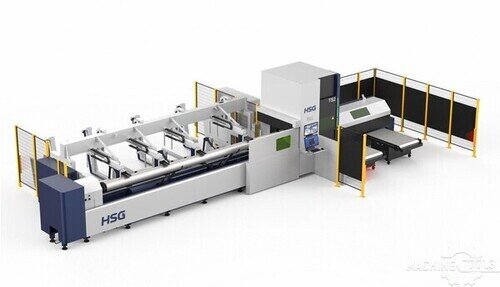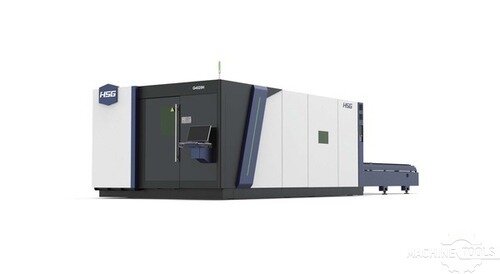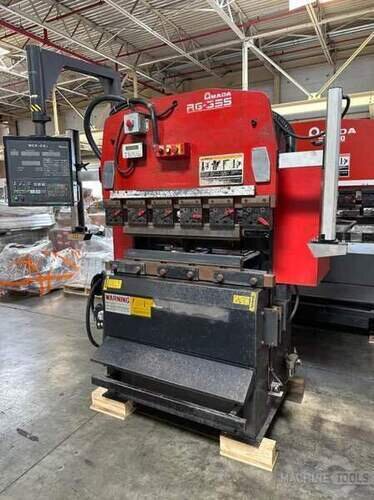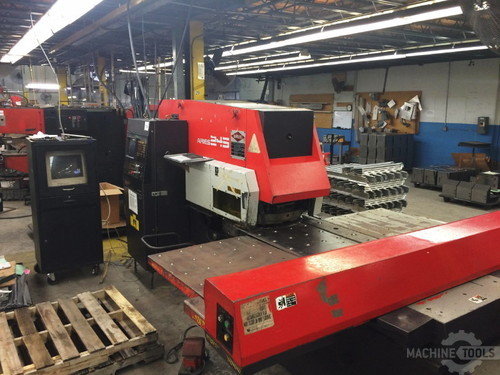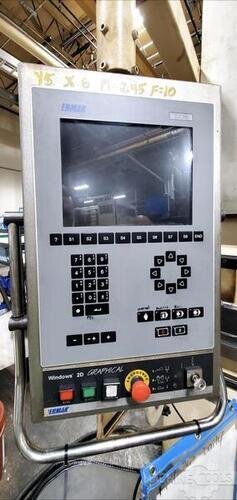In the world of metal cutting, choosing the right laser technology can significantly impact your operational efficiency, cost-effectiveness, and overall productivity. Two of the most prominent technologies in this field are Fiber Lasers and CO2 Lasers. Each has its unique strengths and applications, making the decision between them crucial for any metal fabrication business. This article delves into the key differences, advantages, and benefits of Fiber and CO2 Lasers to help you make an informed choice for your metal cutting needs.
Introduction to Fiber and CO2 Lasers for Metal Cutting
Fiber and CO2 lasers are two of the most widely used technologies in the metal cutting industry. Fiber lasers utilize a solid-state laser source, where the laser beam is generated by a bank of diodes and then channeled through a fiber optic cable. This technology is known for its high efficiency and precision, making it ideal for cutting a variety of metals, including stainless steel, aluminum, and brass.
On the other hand, CO2 lasers use a gas mixture, primarily carbon dioxide, to produce the laser beam. This type of laser has been a staple in the industry for decades and is particularly effective for cutting non-metal materials like wood, acrylic, and certain plastics, in addition to metals. CO2 lasers are known for their ability to cut thicker materials with smooth edges.
Both technologies have their own set of advantages and limitations, which makes understanding their core differences essential for selecting the right tool for your specific needs. Factors such as material type, thickness, cutting speed, and operational costs play a significant role in this decision-making process.
In the following sections, we will explore the key differences between Fiber and CO2 lasers, and discuss the specific advantages and benefits each technology offers for various metal cutting applications.
Key Differences Between Fiber and CO2 Laser Technologies
One of the primary differences between Fiber and CO2 lasers lies in their wavelength. Fiber lasers operate at a wavelength of around 1.06 micrometers, which is significantly shorter than the 10.6 micrometer wavelength of CO2 lasers. This shorter wavelength allows Fiber lasers to be absorbed more efficiently by metal surfaces, resulting in faster and more precise cuts.
Another critical difference is the maintenance requirements. Fiber lasers have fewer moving parts and do not require mirrors or gas refills, making them more maintenance-friendly and cost-effective in the long run. CO2 lasers, however, require regular maintenance of their optical components and gas supply, which can add to the operational costs over time.
The efficiency of energy conversion is also a distinguishing factor. Fiber lasers typically offer higher electrical efficiency, converting more of the input power into usable laser light. This results in lower energy consumption and reduced operational costs. CO2 lasers, while effective, tend to have lower energy efficiency, which can lead to higher electricity bills.
Lastly, the initial investment cost can vary significantly between the two technologies. Fiber lasers generally have a higher upfront cost compared to CO2 lasers. However, the long-term savings in maintenance and operational efficiency often justify the initial expenditure, making Fiber lasers a more cost-effective solution over time.
HSG TS2 HIGH SPEED TUBE FIBER LASER CUTTING MACHINE
HSG 3015H 12KW
Advantages of Using Fiber Lasers in Metal Cutting
Fiber lasers offer several advantages that make them a preferred choice for many metal cutting applications. One of the most notable benefits is their cutting speed. Due to their high power density and efficient absorption by metals, Fiber lasers can cut through materials much faster than CO2 lasers, significantly boosting productivity.
Another advantage is the precision and quality of the cuts. Fiber lasers produce a smaller focused spot size, which results in finer cuts with minimal heat-affected zones. This precision is particularly beneficial for intricate designs and applications requiring high accuracy, such as in the aerospace and automotive industries.
The versatility of Fiber lasers is also a significant advantage. They can cut a wide range of metals, including highly reflective materials like copper and brass, which are challenging for CO2 lasers. This versatility makes Fiber lasers an excellent choice for manufacturers dealing with diverse metal types and thicknesses.
Additionally, the lower maintenance requirements and higher energy efficiency of Fiber lasers translate to reduced operational costs. With fewer consumables and less downtime for maintenance, businesses can achieve higher profitability and a quicker return on investment.
Benefits of CO2 Lasers for Various Metal Cutting Applications
Despite the advantages of Fiber lasers, CO2 lasers still hold a significant place in the metal cutting industry, particularly for specific applications. One of the primary benefits of CO2 lasers is their ability to cut thicker materials with smooth, clean edges. This makes them ideal for applications requiring high-quality edge finishes, such as in the signage and decorative metal industries.
CO2 lasers are also highly effective for cutting non-metal materials. Their longer wavelength is better absorbed by organic materials, making them suitable for cutting wood, acrylic, and certain plastics. This versatility allows manufacturers to use a single machine for a variety of materials, enhancing operational flexibility.
Another benefit of CO2 lasers is their lower initial investment cost. For businesses with budget constraints, CO2 lasers offer a more affordable entry point into laser cutting technology. While the long-term operational costs may be higher, the lower upfront cost can be a deciding factor for many small to medium-sized enterprises.
Lastly, CO2 lasers have a proven track record of reliability and performance. With decades of use in the industry, they have established themselves as a dependable technology for a wide range of cutting applications. This reliability, combined with their ability to handle thicker materials and non-metals, ensures that CO2 lasers remain a valuable tool in the metal cutting arsenal.
FAQ
What are the main differences in maintenance between Fiber and CO2 lasers?
Fiber lasers require less maintenance due to fewer moving parts and no need for gas refills, whereas CO2 lasers require regular maintenance of optical components and gas supply.
Which laser technology is more cost-effective in the long run?
Fiber lasers are generally more cost-effective in the long run due to their higher energy efficiency and lower maintenance requirements, despite a higher initial investment.
Can Fiber lasers cut non-metal materials effectively?
Fiber lasers are primarily designed for metal cutting and are less effective on non-metal materials compared to CO2 lasers, which excel in cutting a variety of non-metals.
What types of metals are best suited for Fiber lasers?
Fiber lasers are highly effective for cutting a wide range of metals, including stainless steel, aluminum, brass, and highly reflective materials like copper.
Are CO2 lasers suitable for high-precision cutting applications?
While CO2 lasers can achieve high-quality cuts, Fiber lasers generally offer higher precision and finer cuts, making them more suitable for applications requiring intricate designs.
How does the cutting speed compare between Fiber and CO2 lasers?
Fiber lasers typically offer faster cutting speeds due to their higher power density and efficient absorption by metals, leading to increased productivity.
What factors should be considered when choosing between Fiber and CO2 lasers?
Key factors include the type and thickness of materials to be cut, required cutting speed and precision, maintenance and operational costs, and initial investment budget.
Choosing between Fiber and CO2 lasers for metal cutting ultimately depends on your specific needs and operational goals. By understanding the key differences, advantages, and benefits of each technology, you can make an informed decision that enhances your productivity and profitability. If you need further guidance or have any questions about the latest in metal fabrication technology, don’t hesitate to reach out. We’re here to help you achieve your goals.
Get Weekly Mac-Tech News & Updates

